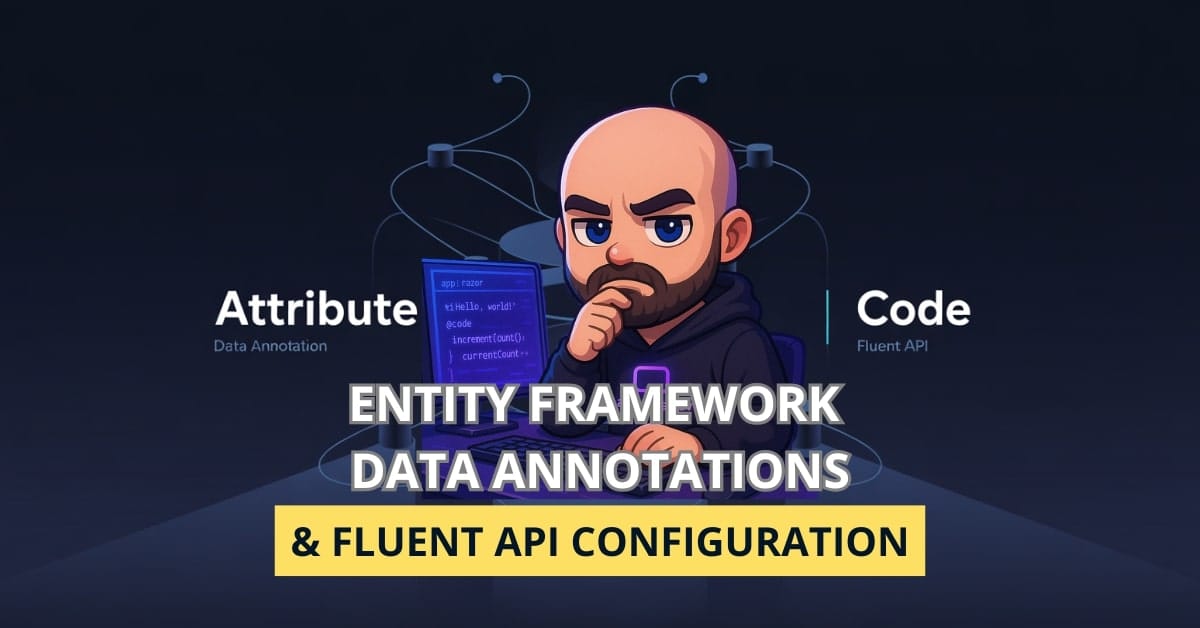Introduction
Entity Framework Core (EF Core) is a powerful Object-Relational Mapping (ORM) framework for .NET applications. It facilitates data access by abstracting database interactions. Mastering querying data using Language Integrated Query (LINQ) is a critical aspect of leveraging EF Core. LINQ provides an expressive and intuitive syntax for data manipulation. This post aims to simplify the process of querying data in Entity Framework Core using LINQ. It provides a technical yet accessible tutorial for beginners. We will cover a range of topics in C#, including writing LINQ queries, understanding deferred execution and eager loading, and mastering projection with the Select method. Each topic will be explained with detailed examples.
Writing LINQ Queries in Entity Framework Core
Introduction to LINQ in EF Core
Language Integrated Query (LINQ) is a powerful feature in the .NET ecosystem that enables developers to write SQL-like queries directly in C#. Integrated seamlessly with Entity Framework Core, LINQ transforms how we interact with databases, making data access more intuitive and type-safe. Understanding LINQ is essential for anyone working with EF Core. It simplifies data retrieval and manipulation while leveraging the full capabilities of the underlying database through efficient query translation.
Basic Concepts of LINQ
LINQ queries are composed of three key parts: the data source, the query creation, and the query execution. In the context of EF Core, the data source is typically a DbSet representing a table in your database. Query creation involves using LINQ operators to shape your data retrieval, such as filtering with Where or sorting with OrderBy. It is important to note that the query is not executed upon creation. Instead, it is deferred until the query variable is iterated over. This principle is known as deferred execution.
Examples of LINQ Queries
To illustrate, let’s consider a basic example where we have a Blogs table in our database, and we want to retrieve all blogs ordered by their Title.
using (var context = new BloggingContext())
{
var blogs = context.Blogs
.OrderBy(b => b.Title)
.ToList();
foreach (var blog in blogs)
{
Console.WriteLine(blog.Title);
}
}This simple example demonstrates how to create a LINQ query to fetch and sort data from a database using EF Core. Now, let’s add a filter to select only published blogs.
using (var context = new BloggingContext())
{
var publishedBlogs = context.Blogs
.Where(b => b.IsPublished)
.OrderBy(b => b.Title)
.ToList();
foreach (var blog in publishedBlogs)
{
Console.WriteLine(blog.Title);
}
}Here, the Where clause is used to filter the blogs, and only those with IsPublished set to true are retrieved and sorted by their title.
Common Pitfalls and Avoidance Strategies
While writing LINQ queries is straightforward, there are common pitfalls:
- Over-fetching Data: Retrieving more data than needed can impact performance. Always aim to select only the required columns or entities.
- N+1 Queries Problem: This occurs when your query leads to multiple subsequent queries, usually inside a loop. Utilize eager loading to mitigate this issue.
- Ignoring Indexes: Ensure your queries leverage indexed columns for filtering and sorting to optimize performance.
Deferred Execution and Eager Loading in Entity Framework Core
Understanding Deferred Execution
Deferred execution is a crucial concept in LINQ that affects the timing of query execution against the database. Essentially, a query is not executed when defined, but rather when its results are iterated over or explicitly demanded. This behavior enables query composition, allowing you to build up a query in steps before executing it, providing flexibility and efficiency in data retrieval.
Example of Deferred Execution
Consider a scenario where you’re building a query step by step based on conditional logic:
using (var context = new BloggingContext())
{
var query = context.Blogs.AsQueryable();
if (userIsInterestedInPublishedBlogs)
{
query = query.Where(b => b.IsPublished);
}
if (orderByTitle)
{
query = query.OrderBy(b => b.Title);
}
var blogs = query.ToList(); // Query executed here
}In this example, the query is constructed conditionally but not executed until the ToList() method is called. This sentence demonstrates the power of deferred execution. It allows for dynamic query construction, with execution deferred until the result is needed.
Introduction to Eager Loading
Eager loading is a pattern in Entity Framework Core that loads related data alongside the main entity in a single query. This technique optimizes data retrieval and helps avoid the N+1 query problem.
Implementing Eager Loading
Eager loading in EF Core is achieved using the Include method, which specifies related entities to be included in the query results:
using (var context = new BloggingContext())
{
var blogs = context.Blogs
.Include(b => b.Posts) // Eagerly load Posts
.ToList();
foreach (var blog in blogs)
{
Console.WriteLine(blog.Title);
foreach (var post in blog.Posts)
{
Console.WriteLine($" - {post.Title}");
}
}
}This example demonstrates how to retrieve all blogs and their related posts in a single query, which reduces the number of database calls and improves application performance.
Best Practices for Deferred Execution and Eager Loading
- Be mindful of deferred execution: Ensure that your query execution aligns with your application’s performance and data freshness requirements.
- Use eager loading judiciously: Although eager loading can help solve the N+1 query problem, it can also lead to over-fetching of unnecessary data if overused. Always tailor your
Includestatements to your actual data needs.
Projection and the Select Method
LINQ’s projection feature empowers you to shape the data returned by your queries. Projection allows selecting specific data instead of returning entire entity instances, which can improve performance and reduce memory usage.
Using the Select Method for Projection
The Select method is used in LINQ to project query results into a new form. This can be as simple as selecting a subset of columns or more complex, such as transforming the results into DTOs (Data Transfer Objects) or other custom objects.
Example of Projection Using Select
Let’s project blog data into a simpler DTO that includes only the blog title and the count of posts:
using (var context = new BloggingContext())
{
var blogSummaries = context.Blogs
.Select(b => new BlogSummaryDto
{
Title = b.Title,
PostCount = b.Posts.Count
})
.ToList();
foreach (var summary in blogSummaries)
{
Console.WriteLine($"{summary.Title} has {summary.PostCount} posts");
}
}This example shows how to use projection to retrieve only necessary data, reducing the amount of data transferred and processed.
Best Practices for Projection
- Focus on the needed data: To optimize performance, always use the smallest set of data necessary for your use case.
- Consider DTOs for complex scenarios: Using DTOs can help encapsulate projections, making your code cleaner and more maintainable.
- Be aware of query complexity: While projection can optimize data retrieval, overly complex projections can lead to inefficient queries. Aim for a balance between efficiency and simplicity.
Conclusion
Querying data in Entity Framework Core using LINQ is a foundational skill for .NET developers. By understanding how to write efficient LINQ queries, leveraging deferred execution and eager loading, and effectively using projection, you can optimize your data access patterns and improve your application’s performance.
Experimenting with different queries and approaches is key to mastering entity framework linq data querying. Remember, these guidelines can help you start optimizing, but your specific use cases and performance requirements should guide your efforts.
For further learning, explore the official Entity Framework Core documentation and engage with the community through forums and tutorials. Happy coding, and may your queries be efficient and your data access seamless!




